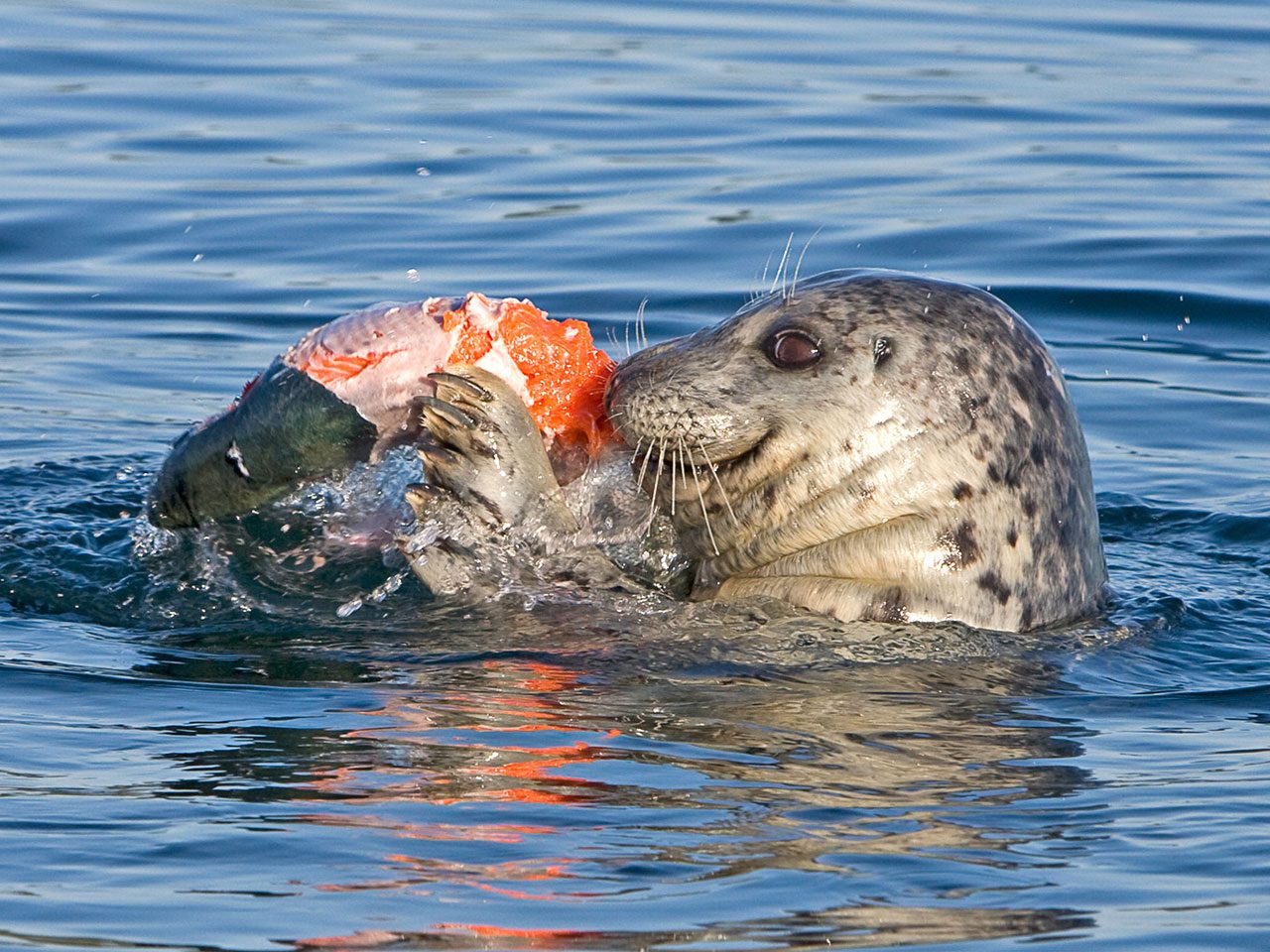By Hayley Day
Journal Reporter
Seals are eating more Chinook than Southern resident killer whales.
That’s bad for both endangered species’ recoveries.
“The seals might not be the enemy as much as the problem is that we’ve lost forage fish available to them,” said Joe Gaydos, science director of the SeaDoc Society on Orcas Island.
According to a recent Canadian study, the amount of Chinook salmon eaten by seals in the Salish Sea has increased from 68 metric tons in 1970 to 625 metric tons in 2015. That’s double the amount Southern resident killer whales ate in 2015 in the same location, and six times more than commercial and recreational fisheries according to the study.
Lesanna Lahner of SR3 (Sealife Response, Rehabilitation and Research) in Snohomish County, said salmon are not seals’ first food choice.
“When the ecosystem is balanced and forage fish are available, we know that harbor seals and sea lions will preferentially eat those forage fish and leave the salmon alone,” said Lahner.
The population of seals’ main food source of the smaller, forage or bait fish, according to additional recent studies, are depleting due to toxins in the water and overfishing, Lahner added.
Those are similar threats to the Chinook salmon, which have been listed under the Endangered Species Act since 1999, and are the Southern resident orcas main food source. Southern resident killer whales live in the waters surrounding the San Juan Islands for parts of the year.
Harbor seals were hunted for sport until 1972, according to the study. In the Salish Sea, they are now at the same levels they were 100 years ago, before human interaction, said Lahner.
However, there are currently only 78 Southern resident killer whales, compared to the 220 recorded by the Center for Whale Research’s first study in 1976. The Southern residents lost seven orcas since 2016, alone. The loss of Chinook salmon is one of 10 threats to killer whales, according to the National Oceanic and Atmospheric Administration.
According to the recent study, seals are eating the smaller, juvenile Chinook, migrating from the streams where they were hatched, to the ocean. The report estimates roughly 162,000 adult Chinook never make it to the Salish Sea, each year.
“This project is really looking at when seals are eating young salmon that are migrating out, so it’s not the big salmon people are catching on their fishing poles,” said Gaydos.
However, predation by marine mammals is not a threat to the Chinook or Southern residents recovery, said Lahner. The seal increase may be the indirect cause of orcas deaths, but the decrease in forage fish is the direct cause.
“It’s kind of like saying, if a person dies of smoke cigarettes, they died of a heart attack, when ultimately it was the cigarettes that caused the death,” said Lahner. “We should be looking at the cigarettes, not the heart disease.”
According to Gaydos, seals eat up to 60 different varieties of fish in the Salish Sea. Southern resident orcas only eat certain types of salmon (mostly Chinook) and will go hungry if they aren’t available, said Lahner.
The study, said Gaydos, gives an additional reason for the Chinook population decrease, but not all the reasons why.
“The seals are doing what they’ve always done, but because we’ve changed the streams and damaged the habitat for the salmon spawning areas, that’s more of an issue now,” said Gaydos. “The study doesn’t give us all the answers, but lets us know we need to pay attention to something else.”
For more information on Salish Sea marine wildlife, contact the SeaDoc Society at seadoc@seadocsociety.org or 376-3910 or visit www.seadocsociety.org.



